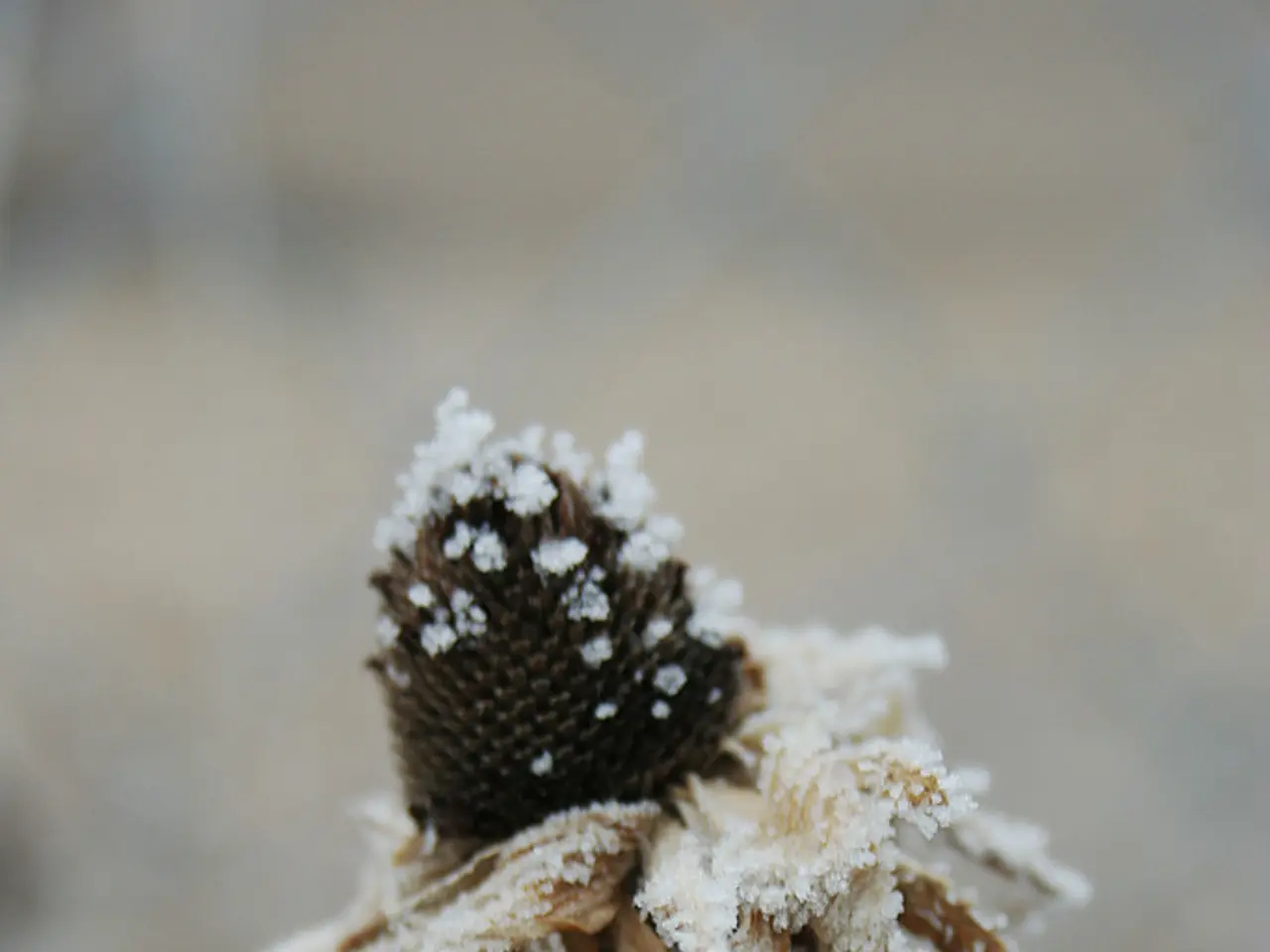Managing Winter Woes: Addressing Winter Burn and Frost Injuries in Plants
Protecting Plants from Winter Damage: A Guide for Gardeners
Winter can be a challenging season for plants, with frost, sunscald, and mechanical injuries posing threats to their health. Here are some strategies to help prevent and treat winter damage in plants.
1. Frost Damage
To safeguard plants from freezing temperatures, insulate both roots and above-ground parts. Mulching with materials like leaves, straw, compost, or conifer branches around root zones can keep soil warmer. For tender perennials and shrubs, cover them with burlap, old blankets, sheets, or woven row covers. Container plants can be moved indoors or wrapped with bubble wrap. Structures like tomato cages wrapped with burlap and stuffed with insulating materials can offer extra protection for prized plants. Inside unheated structures, maintaining temperatures just above freezing (30 to 35°F or -1 to 2°C) can reduce frost damage and avoid premature deacclimation that increases susceptibility to cold.
2. Winter Sunscald
Sunscald damage on bark occurs due to temperature fluctuations and intense sunlight in winter. Wrapping trunks or exposed stems with burlap or a commercial tree wrap during late fall helps protect against this damage by buffering temperature swings and sun exposure. Adding mulch around the base also keeps roots insulated and maintains consistent moisture to reduce stress.
3. Broken Branches and Stems
Heavy snow and ice can cause branch breakage, particularly on fragile shrubs like arborvitae, boxwoods, cypress, rhododendrons, and azaleas. To prevent damage, gently knock snow off branches regularly and tie or wrap them upward with rope to support and maintain upright structure before and during snow events.
4. Winter Desiccation (drying out)
Plants lose moisture in cold, dry winter winds because roots are less able to take up water from frozen soil. To prevent desiccation, mulch extensively around plants to conserve soil moisture, and protect foliage from wind exposure with burlap screens or evergreens. Water plants thoroughly before the ground freezes to maintain hydration.
5. Infestation from Burrowing Animals
Small animals like voles or rabbits may damage roots or stems under snow cover. Prevent infestation by creating physical barriers such as wire mesh cages around trunks or critical plants. Clearing away dense ground cover in winter can reduce rodent habitat. For vulnerable container plants, move them indoors or off the ground and protect with coverings.
After winter, pruning broken or dead branches during late winter or early spring after full dormancy can encourage new growth. Avoid heavy fertilization immediately but encourage recovery with appropriate nutrients once growth resumes.
In summary, combining physical protections such as mulch, wraps, and cages with environmental management (e.g., moving containers indoors) and vigilance throughout winter can minimize damage from frost, sunscald, mechanical injury, drying, and animal infestation.
Transitioning our plants to a home-and-garden setup over the winter months requires an understanding of potential threats to their lifestyle, such as frost, sunscald, and mechanical injuries. To create a winter-friendly environment, consider adopting gardening strategies like insulating plant roots and above-ground parts, safeguarding tender plants with coverings, and monitoring for infestations from burrowing animals.




